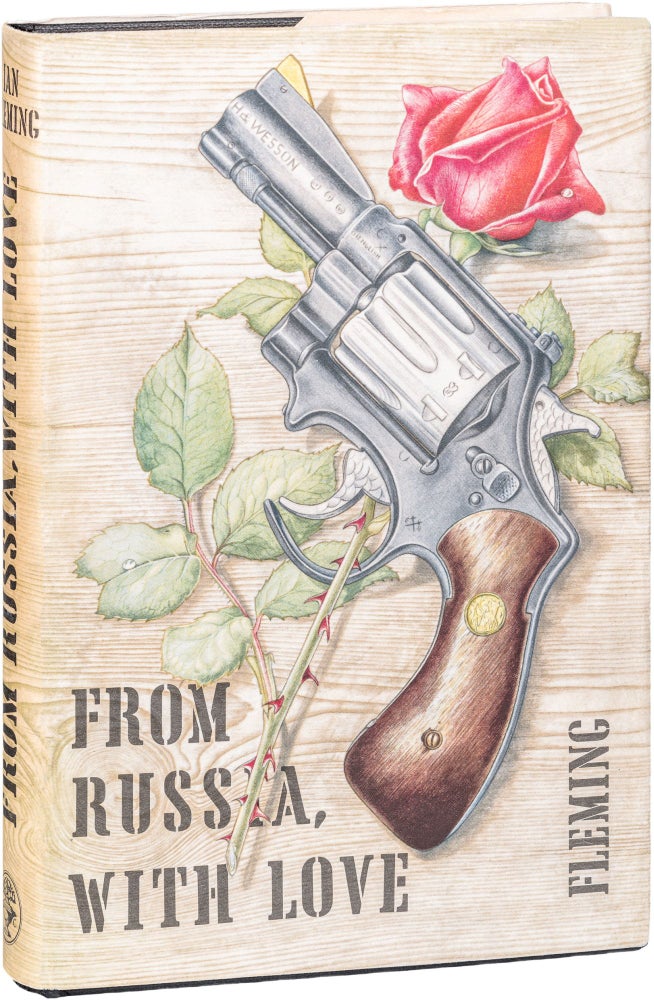
From Russia, with Love
London: Cape, 1957. First Edition. Hardcover. 1st edition, 1st printing (correct copyright page, the misprints sexuality for asexuality, page 18, line 1, and all others). Fine in a fine dustjacket. Full chagrin case. The word love is in the title, but in the narrative, we only find love’s softer sounds like buttons, snaps, ties, hooks, belts, and zippers. Fine / fine. Item #788
This is about the quality of a 1st edition with other copies of it always for sale, but seldom for sale in a dustjacket like ours. The undemanding math says that fine 1st editions, of most mid–20th century books, when they are accurately described, are 10 times rarer than not fine ones for twice the price, showing that the bargains are still at the top of the market. And if you can get a fine copy in a fine jacket of a book you want, then that becomes a rule of guidance easily obeyed by even beginning collectors. But what about a fine book that is overpriced? It is like the last donut in the box, everybody says they won’t take it, but somebody always does. And hear this: For buyers focused on condition no explanation is necessary, for those focused only on price, no explanation is possible (the finest copies of the greatest books don’t always go up in value the fastest, but that’s the way to invest).
2,600 years ago, The Bible’s Book of Joshua told of moles sent into Jericho where they recruited Rahab, a prostitute and innkeeper, for counterespionage. Fenimore Cooper wrote the first 2 secret agent novels, The Spy (1821) and The Bravo (1831). Then Alexandre Dumas fabricated Milady de Winter in The Three Musketeers (1844), the first regime spy to have all the modern subtleties, including a license to kill in the form of a carte blanche handwritten by Cardinal Richelieu, Louis XIII’s Minister of State. From there the genre bumped along with various takes on Dumas, until the media driven Dreyfus Affair (1894–1899, ongoing to 1906) and that got the attention of a generation of novelists. Kipling’s Kim (1901), Childers’ Riddle of the Sands (1903), Orczy’s The Scarlet Pimpernel (1905), Conrad’s The Secret Agent (1907), and Buchan’s The Thirty–Nine Steps (1915), set the base, Doyle’s His Last Bow (1917, a short story) raised it half a notch, Maugham’s Ashenden (1928, connected short stories not a novel) chased reality with the skepticism of disenchantment, Hammett’s Red Harvest (1929), laid its harshness bare, and Greene elevated it 3 times (beginning in the 1930s). Then Ian Fleming stood on their shoulders and reinvented it with Casino Royale (1953), but maybe if everybody knows your name, and your drink, you are not a very good spy.
Price:
$7,000.00
